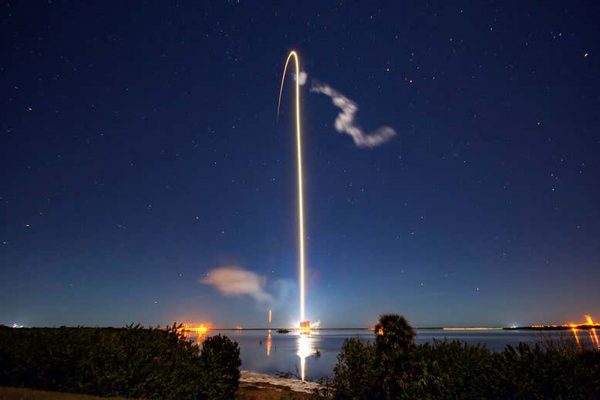RICHMOND, Va. (WWBT) – My messages are lit up with people asking about the bright lights all lined up in the sky.
Hi Andrew,
Last night at 9:04 I saw a column of 7 or 8 star-like points of light moving across the sky West to East passing by the Big Dipper. They remained perfectly aligned and equidistant to the point where it briefly appeared as if the Big Dipper Constellation was moving rather than the lights as they passed by.
Has anyone else reported this? Any ideas? Satellites?
Mark is right– it’s satellites. They are a special kind of satellites that Elon Musk’s Starlink program just started launching.
If you want to see them in Virginia, they should be visible again today (Wednesday, April 29) at 8:56 pm in the NW sky, moving to the SE. While this can be fun to see, this plan has astronomers in a serious uproar.
Starlink eventually plans to place up to 40,000 communications satellites into Earth orbit to provide low-cost high bandwidth internet connections. That’s obviously a lot– and a threat to night-sky research.
I sent a note to Astronomer Kenneth Wilson, to see what he thinks. Like most astronomers, he’s not happy.
“Unfortunately, Mr. Musk and his engineers did not consult or consider the impact some many satellites would have on amateur and professional astronomers. As you know satellites can be seen when sunlight reflects off them. We see them as dots of light moving rapidly across the night sky. Any astronomer who tries to photograph [or research] the objects in the night sky must usually take long exposures and/or multiple long exposures to get a useful image of the object the astronomer wants to study. If a satellite happens to pass in front of that object while the astronomer is taking a picture of it, the photobombing satellite can ruin the image and waste time and hence money of the astronomer. Since the 1960s, astronomers have gotten used to the occasional intrusion of a satellite into their photos, but the sudden intrusion of 40,000 new ones threatens to seriously comprise several major astronomical research programs and the enjoyment of the night sky by thousands of amateur astronomers.”
To their credit, Starlink appears to be at least trying to mitigate the problem. You can read about their attempts in Sky and Telescope
Although it’ll be neat for families to try to spot in the night sky, this is a huge controversy that you can read more about at NewScientist. They call it an “existential threat to astronomy.”
The satellites will provide internet access to the entire world but limit scientists’ view of worlds beyond our own.
Copyright 2020 WWBT. All rights reserved.






